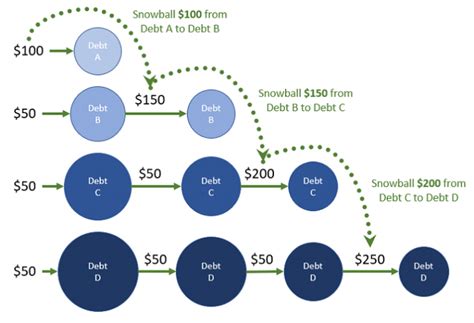
A California server’s hopes for a $5,000 windfall, stemming from what appeared to be a remarkably generous tip on a $27 bill, were dashed after the bank deemed the check fraudulent, leaving her with an empty promise and raising questions about check fraud and responsibility.
A server at a California diner experienced a rollercoaster of emotions after receiving a check with a seemingly generous $5,000 tip on a $27.75 bill. The server, identified as Christina, initially believed her financial dreams had come true. However, her excitement was short-lived when the bank deemed the check fraudulent, leaving her with nothing but disappointment. The incident has sparked a debate about the increasing prevalence of check fraud and the responsibilities of both financial institutions and individuals in safeguarding against it.
Christina, who has worked at the diner for an unspecified period, received the check from a customer who seemed affable and unremarkable. According to Christina, “He was a very nice man. He came in. He ordered his food to go.” After receiving the check, Christina noticed the sizable tip and, understandably, felt a surge of elation. “I thought I was going to faint. I was like, ‘Oh my God, this doesn’t happen to me.’”
The diner manager also shared Christina’s initial optimism. Believing the tip to be legitimate, the manager cashed the check, giving Christina the $5,000 in cash. This act of generosity and trust highlights the close-knit nature of the diner and its staff. However, this trust was soon betrayed when the bank notified the diner that the check was fraudulent.
The bank reversed the transaction, leaving the diner $5,000 short. Consequently, Christina was required to return the money, returning her to her pre-tip financial state. The incident left Christina feeling betrayed and disheartened. “It’s not fair. I was so excited,” she lamented.
The situation has understandably caused distress and financial strain for Christina. The initial joy of receiving such a large tip quickly turned into frustration and disappointment. The incident serves as a stark reminder of the prevalence of financial fraud and its potential impact on everyday individuals.
Check fraud, which involves using fraudulent or altered checks to illegally obtain funds from another person’s account, remains a significant problem in the United States. According to the American Bankers Association, check fraud losses amounted to hundreds of millions of dollars annually. Various methods are used by fraudsters, including forging signatures, altering the amount on a legitimate check, and creating counterfeit checks.
The ease with which counterfeit checks can be produced, coupled with the anonymity afforded by certain payment methods, makes check fraud a challenging crime to combat. Furthermore, the increasing sophistication of fraudsters and their ability to exploit vulnerabilities in the banking system contribute to the persistence of this problem.
The incident involving Christina raises several important questions about the responsibilities of banks, businesses, and individuals in preventing and addressing check fraud. Banks have a responsibility to implement robust security measures to detect and prevent fraudulent transactions. This includes verifying the authenticity of checks, monitoring accounts for suspicious activity, and providing training to employees on fraud detection techniques.
Businesses also play a crucial role in preventing check fraud. They should train employees to recognize the warning signs of fraudulent checks, such as unusual check stock, mismatched fonts, and irregular signatures. Businesses should also implement policies and procedures for verifying the identity of customers paying with checks and for handling suspicious transactions.
Individuals can take steps to protect themselves from check fraud by carefully reviewing their bank statements, safeguarding their checks and account information, and reporting any suspicious activity to their bank immediately. It’s also important to be wary of unsolicited offers or requests for money, as these may be signs of a scam.
In Christina’s case, the diner manager’s decision to cash the check before it cleared the bank was a calculated risk. While the manager’s intentions were undoubtedly good, the incident serves as a cautionary tale about the importance of verifying the authenticity of checks before disbursing funds. Waiting for a check to clear, although it may take a few days, can prevent significant financial losses.
The incident highlights the vulnerability of service industry workers to financial fraud. Servers, bartenders, and other tipped employees often rely on tips to supplement their income, making them particularly susceptible to scams involving fraudulent payments. Employers in the service industry should provide training to employees on how to recognize and avoid these types of scams.
Beyond the immediate financial loss, the incident also has emotional and psychological impacts on Christina. The initial excitement and hope associated with receiving the large tip quickly turned into disappointment and frustration. This emotional rollercoaster can be particularly damaging, especially for individuals who are already struggling financially.
The story of Christina’s experience has resonated with many people, highlighting the widespread concerns about financial security and the potential for fraud to disrupt everyday lives. The incident has sparked discussions on social media and in the community about the need for greater awareness and prevention efforts to combat check fraud.
Financial experts recommend several strategies to mitigate the risk of check fraud, including using electronic payment methods whenever possible, such as debit cards, credit cards, or mobile payment apps. These methods offer greater security and protection against fraud compared to traditional checks. Additionally, individuals should regularly monitor their bank accounts for any unauthorized transactions and report any suspicious activity to their bank immediately.
For businesses, implementing check verification systems can help to identify fraudulent checks before they are cashed. These systems use advanced technology to analyze check images and verify the authenticity of the check. Businesses should also establish clear policies and procedures for handling checks, including requiring identification for all check payments and verifying the signature on the check.
The incident involving Christina also raises questions about the ethical responsibilities of customers. While it is unknown whether the customer who gave Christina the fraudulent check was intentionally trying to defraud her, the incident underscores the importance of honesty and integrity in financial transactions. Customers should ensure that they have sufficient funds in their account before writing a check and should never attempt to pass a fraudulent or altered check.
The broader implications of this incident extend beyond the immediate financial loss and emotional distress experienced by Christina. Check fraud contributes to a climate of distrust and uncertainty in the financial system. It undermines confidence in traditional payment methods and can lead to increased costs for businesses and consumers.
The incident serves as a reminder of the importance of ongoing vigilance and proactive measures to prevent and detect check fraud. Banks, businesses, and individuals must work together to protect themselves from this pervasive crime. By raising awareness, implementing effective security measures, and promoting ethical behavior, we can create a safer and more secure financial environment for everyone.
The impact of this incident on Christina’s personal life is significant. The financial setback, coupled with the emotional disappointment, can have a ripple effect on her ability to meet her financial obligations and plan for the future. It also highlights the precariousness of relying on tips as a significant source of income, particularly in industries where wages are often low.
This incident serves as a poignant example of how financial fraud can disproportionately affect vulnerable populations, such as service industry workers. These individuals often lack the resources and support systems to cope with the financial and emotional consequences of fraud. It underscores the need for greater protections and support services for these workers.
The legal ramifications of check fraud are significant. Depending on the amount of money involved and the specific circumstances of the case, check fraud can be charged as either a misdemeanor or a felony. Penalties for check fraud can include fines, imprisonment, and restitution to the victim.
In Christina’s case, if the customer who gave her the fraudulent check is identified and prosecuted, they could face criminal charges for check fraud. However, even if the customer is not identified, the incident serves as a reminder of the potential legal consequences of engaging in fraudulent financial activities.
The media coverage of Christina’s story has raised awareness about the prevalence of check fraud and its potential impact on everyday individuals. The story has been widely shared on social media and has generated significant discussion about the need for greater protection against financial fraud.
The incident has also prompted calls for increased regulation and oversight of the banking industry to prevent check fraud. Some advocates argue that banks should be held more accountable for failing to detect and prevent fraudulent transactions. Others argue that stricter laws are needed to deter check fraud and punish those who engage in it.
The long-term implications of this incident are still unfolding. It remains to be seen whether Christina will be able to recover from the financial and emotional setback she experienced. However, the incident serves as a valuable lesson for everyone about the importance of vigilance, caution, and awareness in protecting themselves from financial fraud.
The incident could potentially lead to changes in the diner’s policies and procedures for accepting checks. The diner may implement stricter verification measures or decide to no longer accept checks as a form of payment. These changes could have a ripple effect on other businesses in the community, as they may also decide to tighten their check acceptance policies.
The incident also highlights the importance of financial literacy and education. Many people lack a basic understanding of financial fraud and how to protect themselves from it. Increased financial literacy education can help individuals to make informed decisions about their finances and avoid becoming victims of fraud.
The story of Christina’s dashed hopes serves as a compelling reminder of the human cost of financial crime. It underscores the importance of working together to prevent fraud and protect vulnerable individuals from its devastating consequences.
The incident has also raised questions about the role of technology in combating check fraud. While technology has made it easier to produce counterfeit checks, it has also provided new tools for detecting and preventing fraud. Banks and businesses can use advanced data analytics and machine learning algorithms to identify suspicious transactions and prevent them from being processed.
The future of check fraud prevention will likely involve a combination of technological innovation, regulatory oversight, and increased public awareness. By working together, we can create a more secure and trustworthy financial system for everyone.
Frequently Asked Questions (FAQ)
-
What exactly happened to the California server, Christina?
- Christina, a server at a California diner, received a check with a $5,000 tip on a $27.75 bill. Initially, the diner manager cashed the check and gave Christina the $5,000. However, the bank later deemed the check fraudulent, reversing the transaction and leaving Christina with nothing. As Christina states, “It’s not fair. I was so excited.”
-
How did the diner respond to the fraudulent check?
- The diner manager initially cashed the check, trusting the customer and allowing Christina to receive the $5,000. However, when the bank identified the check as fraudulent, the diner was forced to reverse the transaction, and Christina had to return the money. This resulted in a $5,000 loss for the diner until Christina returned the sum.
-
What are the potential legal consequences for the person who wrote the fraudulent check?
- If the person who wrote the fraudulent check is identified, they could face criminal charges for check fraud. The severity of the charges and penalties would depend on the amount of money involved and the specific laws of California. Penalties could include fines, imprisonment, and restitution to the victim.
-
What can individuals do to protect themselves from check fraud?
- Individuals can protect themselves by carefully reviewing their bank statements, safeguarding their checks and account information, and reporting any suspicious activity to their bank immediately. “Financial experts recommend several strategies to mitigate the risk of check fraud, including using electronic payment methods whenever possible, such as debit cards, credit cards, or mobile payment apps.” It’s also important to be wary of unsolicited offers or requests for money.
-
What role do banks play in preventing check fraud?
- Banks have a responsibility to implement robust security measures to detect and prevent fraudulent transactions. This includes verifying the authenticity of checks, monitoring accounts for suspicious activity, and providing training to employees on fraud detection techniques. According to the American Bankers Association, check fraud losses amount to hundreds of millions of dollars annually, highlighting the need for proactive measures by banks.
-
What are some warning signs of a potentially fraudulent check that businesses should look out for?
- Businesses should train employees to recognize warning signs such as unusual check stock, mismatched fonts, irregular signatures, and alterations to the check. Implementing policies to verify customer identities and scrutinizing transactions can also help prevent fraud.
-
How common is check fraud in the United States, and what are the typical methods used by fraudsters?
- Check fraud remains a significant problem, with losses amounting to hundreds of millions of dollars annually, according to the American Bankers Association. Fraudsters use various methods, including forging signatures, altering amounts on legitimate checks, and creating entirely counterfeit checks.
-
What are some alternative payment methods that offer greater security compared to traditional checks?
- Electronic payment methods such as debit cards, credit cards, and mobile payment apps offer greater security against fraud. These methods often have built-in security features and provide better tracking and verification processes.
-
How does this incident highlight the vulnerability of service industry workers to financial fraud?
- Service industry workers, who often rely on tips to supplement their income, are particularly susceptible to scams involving fraudulent payments. This incident underscores the need for employers to provide training to employees on how to recognize and avoid these types of scams and for greater awareness of the risks involved.
-
What steps can businesses take to prevent check fraud beyond employee training?
- Businesses can implement check verification systems that use advanced technology to analyze check images and verify authenticity. Establishing clear policies for handling checks, requiring identification for all check payments, and verifying signatures can also help prevent fraud.
The incident underscores the importance of several key takeaways. First, it highlights the need for both businesses and individuals to exercise caution when accepting checks, especially for large amounts. Verifying the legitimacy of a check before disbursing funds is crucial to prevent financial losses. Second, it emphasizes the responsibility of banks to implement robust security measures to detect and prevent fraudulent transactions. Banks should invest in advanced technology and training to protect their customers from fraud. Third, it underscores the importance of financial literacy and education. Individuals need to be aware of the risks of check fraud and know how to protect themselves from becoming victims. Finally, it highlights the need for a coordinated effort between banks, businesses, law enforcement, and consumers to combat check fraud. By working together, we can create a safer and more secure financial environment for everyone.
The saga of the California server and the fraudulent $5,000 tip serves as a stark reminder of the pervasive threat of financial fraud in the modern world. It underscores the importance of vigilance, education, and collaboration in protecting individuals and businesses from becoming victims. While Christina’s dream of a financial windfall was dashed, her story has raised awareness about the need for greater awareness and prevention efforts to combat check fraud and other forms of financial crime. It is a story that resonates with many people, highlighting the widespread concerns about financial security and the potential for fraud to disrupt everyday lives.









